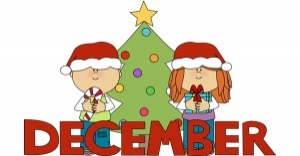The Developmental Milestones Checklist EYLF 2 to 3 Years enables Educators to link each of the milestones within the developmental domains to the EYLF Outcomes.


Experts on early childhood education have for some time believed that much more than the content of learning – like numeracy, literacy and science concepts – it is the acquiring of learning dispositions that ensure the best academic outcomes in the long run. The following article provides information on What Are Learning Dispositions, How Dispositions Change over Time and Context, Examples Of Learning Dispositions and more.
This template is to be used to detail the child's progress over the course of the year. It's great to share with families to let them know specifically how their child developed and the new skills they learnt. It can also be used as a Transition Statement for the child to be shared with the school teacher.
The EYLF explains assessment for children’s learning as the process of gathering and analysing information as evidence about what children know, can do and understand. It is a key part of an ongoing cycle that includes planning, documenting and evaluating children’s learning. And one of the most effective forms of such documentation is the learning story. The following article provides information on What Is A Learning Story, the Components Of A Learning Story, Writing A Learning Story, What To Include In A Learning Story and more.
The Developmental Milestones Checklist EYLF 4 to 8 Months enables Educators to link each of the milestones within the developmental domains to the EYLF Outcomes.
The Developmental Milestones Checklist EYLF 8 to 12 Months enables Educators to link each of the milestones within the developmental domains to the EYLF Outcomes.
The Developmental Milestones Checklist EYLF 3 to 5 Years enables Educators to link each of the milestones within the developmental domains to the EYLF Outcomes.
The Developmental Milestones Checklist EYLF 2 to 3 Years enables Educators to link each of the milestones within the developmental domains to the EYLF Outcomes.
The Developmental Milestones Checklist EYLF 1 to 2 Years enables Educators to link each of the milestones within the developmental domains to the EYLF Outcomes.
Critical reflection has been explained in the EYLF as reflective practices that focus on implications for equity and social justice. In the context of childcare, it involves examining and analysing events, experiences and practices from a range of perspectives to inform future planning and decision-making. The following article provides information on Engaging In Critical Reflections, Questions For Critical Reflections, Practicing Critical Reflections and more.
Experiences in early childhood settings build on the range of experiences with language, literacy and numeracy that children have within their families and communities. The following article provides activities to promote each of the sub-outcomes of EYLF Outcome 5 - Children Are Effective Communicators.
 The following lists cultural and special events that are taking place in December 2025. This should help you to plan and organise upcoming events and… Read More
The following lists cultural and special events that are taking place in December 2025. This should help you to plan and organise upcoming events and… Read More
 Early childhood teachers across Victoria are sounding the alarm over new childcare reforms, warning that the changes are piling administrative burdens onto staff and eroding… Read More
Early childhood teachers across Victoria are sounding the alarm over new childcare reforms, warning that the changes are piling administrative burdens onto staff and eroding… Read More
 Explore the responsibilities, legal obligations, and best practices of the nominated supervisor ECEC with this three-part webinar series presented by Victoria McDowell and Meray Parsons… Read More
Explore the responsibilities, legal obligations, and best practices of the nominated supervisor ECEC with this three-part webinar series presented by Victoria McDowell and Meray Parsons… Read More
 The following lists cultural and special events that are taking place from January to December 2026. This should help you plan and organise upcoming events… Read More
The following lists cultural and special events that are taking place from January to December 2026. This should help you plan and organise upcoming events… Read More
© 2009-2025 Aussie Childcare Network Pty Ltd. All Rights Reserved.
